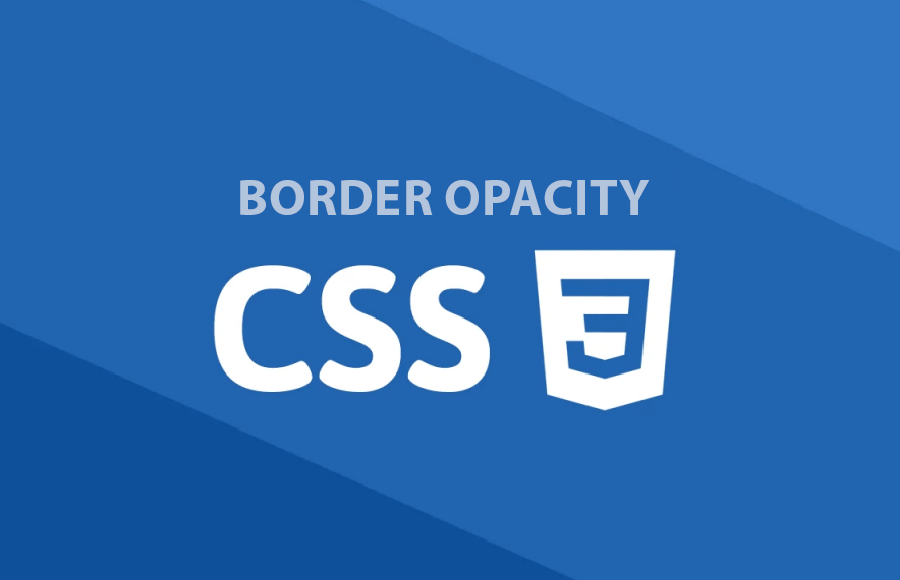In this tutorial, we will delve into the enchanting realm of CSS border opacity. By harnessing the power of border opacity, you can transform the ordinary into the extraordinary, adding depth, sophistication, and allure to your web designs.
Get ready to embark on a journey that will unlock new possibilities and captivate your visitors like never before.
What is Border Opacity?
Border opacity is a remarkable CSS property that allows you to control the transparency of borders surrounding elements on your web page. With this powerful tool at your disposal, you can create visually stunning effects that breathe life into your designs.
By manipulating border opacity, you can seamlessly blend colors, create gradients, and craft captivating patterns that will leave a lasting impression.
Why Should You Embrace Border Opacity?
The allure of border opacity lies in its ability to infuse your designs with a touch of elegance and creativity. By breaking away from the constraints of solid, opaque borders, you open up a world of possibilities.
Transparent and semi-transparent borders can harmonize with background elements, highlight important sections, and provide a subtle yet impactful visual distinction. With border opacity, you can elevate your designs to a whole new level and captivate your audience with stunning aesthetics.
Mastering the Art of Border Opacity
Setting Border Opacity
To apply border opacity to an element, you can use the border-color property along with the rgba() or hsla() color values. These color values allow you to define not only the hue, saturation, and lightness, but also the transparency of the border.
You can also apply this example to CSS Partial Border on any HTML Elements.
Here’s an example of setting border opacity using the RGBA color model:
.my-element {
border: 2px solid rgba(0, 0, 0, 0.5);
}In the example above, the border of the .my-element will have a thickness of 2 pixels and an opacity of 50% (0.5). Feel free to experiment with different opacity values and color combinations to achieve the desired effect.
Creating Gradient Borders
With the power of border opacity, you can also create mesmerizing gradient borders that seamlessly blend colors. To achieve this, you can utilize CSS linear gradients as the border color.
Consider the following example:
.my-element {
border: 2px solid linear-gradient(to right, rgba(255, 0, 0, 0.5), rgba(0, 0, 255, 0.5));
}In this example, a linear gradient is applied to the border of .my-element, transitioning from red to blue with a 50% opacity. This technique allows you to create dynamic and eye-catching designs that will leave your visitors in awe.
Styling Individual Border Sides
CSS border opacity can be applied to individual sides of an element’s border as well. By targeting specific sides, you can achieve unique effects and create intricate designs.
.my-element {
border-top-color: rgba(0, 0, 0, 0.5);
border-right-color: rgba(0, 0, 0, 0.5);
border-bottom-color: rgba(0, 0, 0, 0.5);
border-left-color: rgba(0, 0, 0, 0.5);
}In this example, the .my-element has a rounded border with a 50% opacity. Feel free to experiment with different border radii and opacity values to create unique and visually appealing effects.
Hover Effects and Transition Animations
CSS border opacity can be combined with hover effects and CSS transitions to create interactive and engaging experiences for your users. By animating the border opacity on hover, you can add a subtle but captivating effect to your elements.
.my-element {
border: 2px solid rgba(0, 0, 0, 1);
transition: border-color 0.3s ease;
}
.my-element:hover {
border-color: rgba(0, 0, 0, 0.5);
}In this example, when hovering over the .my-element, the border color transitions from fully opaque to 50% opacity, creating a smooth and visually appealing animation. This technique can be applied to various elements on your page, adding an extra layer of interactivity and delight.
Frequently Asked Questions
Q: Can I use border opacity on any HTML element? A: Yes, border opacity can be applied to any HTML element that has a border defined.
Q: How do I ensure browser compatibility when using border opacity? A: CSS border opacity is widely supported by modern browsers. However, it’s always a good practice to test your designs across different browsers to ensure consistent rendering.
Q: Can I animate the border opacity using CSS animations? A: While you cannot animate the border opacity directly using CSS animations, you can achieve the effect by animating other properties, such as the border color, using transitions.
Q: Does border opacity affect the content inside the element? A: No, border opacity only affects the visibility of the border itself and does not impact the content inside the element.
Conclusion
Congratulations! You have now unlocked the secrets of CSS border opacity and learned how to use this powerful technique to create stunning web designs. By applying transparency to your borders, you can elevate your designs to new heights, captivating your visitors and leaving a lasting impression.
